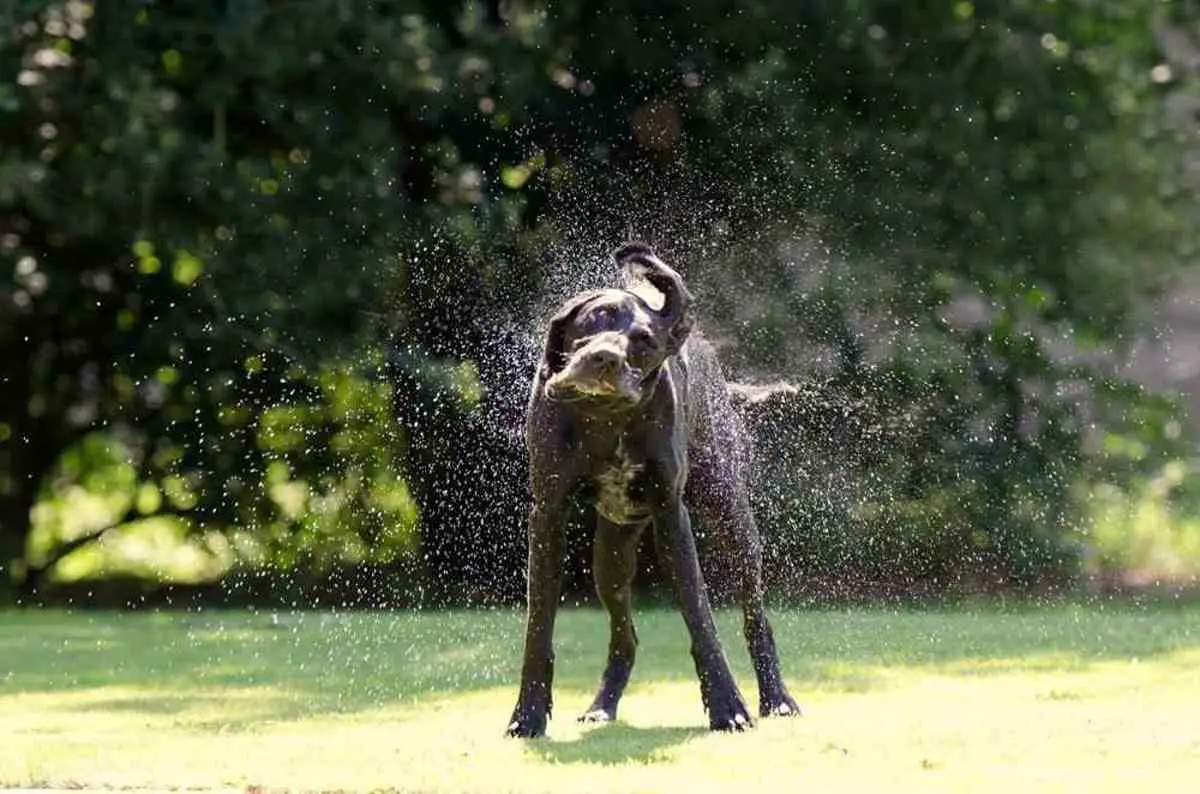Quick Links: Table of Contents
- German Shorthaired Pointer Breed Overview
- History of the German Shorthaired Pointer Breed. Where German Shorthaired Pointers came from
- What the German Shorthaired Pointer Looks Like
- How Much is the German Shorthaired Pointer Puppy?
- Best German Shorthaired Pointer Breeders
- Adopting or Rescuing the German Shorthaired Pointer
- German Shorthaired Pointer Growth
- What Colors do German Shorthaired Pointers Have?
- The Temperament of the German Shorthaired Pointer
- How Long German Shorthaired Pointers Live
- German Shorthaired Pointer Litter Size
- How Fast German Shorthaired Pointers Can Run
- Good Names for German Shorthaired Pointers
- How Intelligent are German Shorthaired Pointers?
- How Popular are German Shorthaired Pointers with New Dog Owners?
- Health Problems in German Shorthaired Pointers and How to Prevent Them
- How to Take Care of German Shorthaired Pointer
- Dog Breeds That Are Similar to German Shorthaired Pointers
- Other Things to Know About German Shorthaired Pointers
German Shorthaired Pointer Breed Overview
The German Shorthaired Pointer is a medium-sized dog.
The adult German Shorthaired Pointer stands 1 foot, 9 inches to 2 feet, 1 inch tall at the sho.
The German Shorthaired Pointer belongs to the Sporting Dogs group.
Dogs in the Sporting Dogs group, like the German Shorthaired Pointer, were bred to help hunters catch and retrieve feathered game. Some sporting dog breeds such as Retrievers, which were built for swimming, were bred to hunt waterfowl in water.
Whereas sporting dog breeds like setters, spaniels, and pointing breeds were bred to hunt quail, pheasant, and other game birds nest on grasslands.
Many Sporting Group breeds have thick, water-repellent coats that protect them from harsh hunting conditions.
The fact that the German Shorthaired Pointer belongs to the Sporting Dogs group is one of the reasons why German Shorthaired Pointers have the personality and temperament that they have.
The temperament of the German Shorthaired Pointer is generally described as:
- Affectionate
- Boisterous
- Bold
- Cooperative
- Intelligent
- Trainable
History of the German Shorthaired Pointer Breed. Where German Shorthaired Pointers came from
The German Shorthaired Pointer originated in Germany in the mid-nineteenth century.
These dogs` original body style and personality came from a cross between German bird dogs and scent hounds.
Although the German Shorthaired Pointer is similar to its 17th-century ancestors, This breed added a touch of elegance to the Pointer sport dogs.
Pointers were stockier and thicker, but the German Shorthaired Pointer was skinny and sleek.
These dogs get their names from their country of origin and sleek, short hair.
German Shorthaired Pointers were bred from the start to be extremely athletic and intelligent hunters capable of retrieving game on both land and water.
.
What the German Shorthaired Pointer Looks Like
There is no denying that the German Shorthaired Pointer is a beautiful dog.
They have a medium build, a long body that is wider in the chest (barreled) and tapers to a point at the tail, and they have a short tail.
While This may appear strange, it is similar to the concept of streamlining.
The German Shorthaired Pointer is a very athletically built dog breed, with a pointy nose and a slim body.
To give the tail that stumped appearance at the end, it is usually docked at 40% of its natural length.
German Shorthaired Pointers have a chiseled head with an equally proportioned muzzle.
Their almond-shaped, brown eyes are extremely intelligent.
One of the most intriguing characteristics of This breed is its webbed feet.
The German Shorthaired Pointer is an excellent swimmer due to the webbing between their toes, making them ideal for retrieving animals hunted over water.
Color patterns range from a solid liver color to a ticked or patched white coat.
.
How Much is the German Shorthaired Pointer Puppy?

The average price of a German Shorthaired Pointer puppy is $1140. The price of a German Shorthaired Pointer puppy ranges from $800 to $1300.
A lot of factors determine the price of the German Shorthaired Pointer. These factors include what health records the German Shorthaired Pointer puppy has, the lineage of the German Shorthaired Pointer puppy, the US state the breeder is located in, etc.
To estimate how much you can expect to pay for a puppy German Shorthaired Pointer based on the many factors that determine the price of the German Shorthaired Pointer puppy, check out our calculator that lets you estimate how much you should expect to pay for the German Shorthaired Pointer puppy based on what you want in the puppy.
When looking to buy a puppy, look at buying a puppy only from well-established breeders that breed puppies primarily for the love of the German Shorthaired Pointer breed, and secondarily for profit. Do not buy a puppy from a puppy mill. Puppy mills mass-produce puppies in bad living conditions for maximum profit.
You may also consider adopting instead of buying a puppy. Adoption costs are very low compared to the price of a puppy.
Best German Shorthaired Pointer Breeders
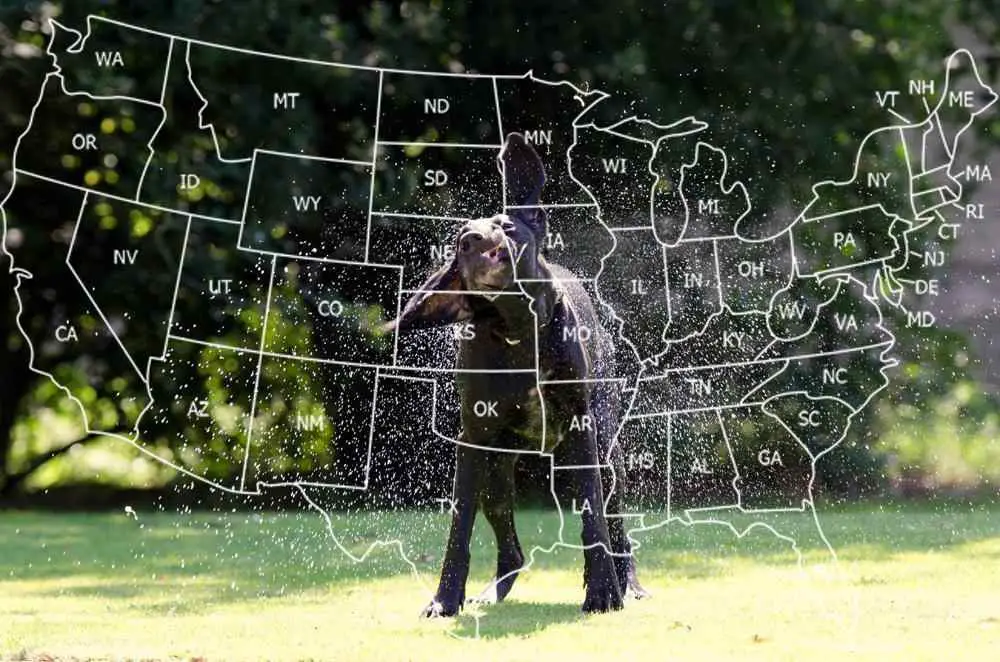
We have researched reputable German Shorthaired Pointer breeders that you can buy a puppy.
Go to this page for our complete list of reputable German Shorthaired Pointer breeders in various states in the United States.
On this page, you will see how much these breeders sell their puppies for, and how many puppies they have available.
A few of these breeders are listed below.
Christine Bell
Puppy Price: $1600
Graff Ranch
Puppy Price: Check with breeder
SHAWN ABNER
Puppy Price: $1000.00
Quail Country GSPs
Puppy Price: $1200
Shady Oak Pointers
Puppy Price: $600.00
Adopting or Rescuing the German Shorthaired Pointer
You may consider adopting a dog instead of buying a puppy. Many dogs, German Shorthaired Pointers included, are currently available for adoption in your local dog shelters.
These helpless but adorable dogs are waiting in dog shelters hoping that someday someone will rescue them. Dog adoption costs are lesser than the cost of a new puppy. Dog adoption costs are usually around $300 or even less.
In addition to your local dog shelter, another good place to find dogs that are available for adoption is petfinder.com.
Below is an adorable Male German Shorthaired Pointer named Rocky that is currently available for adoption on Petfinder.com. You can find other lovely German Shorthaired Pointers like Rocky on pefinder.com.
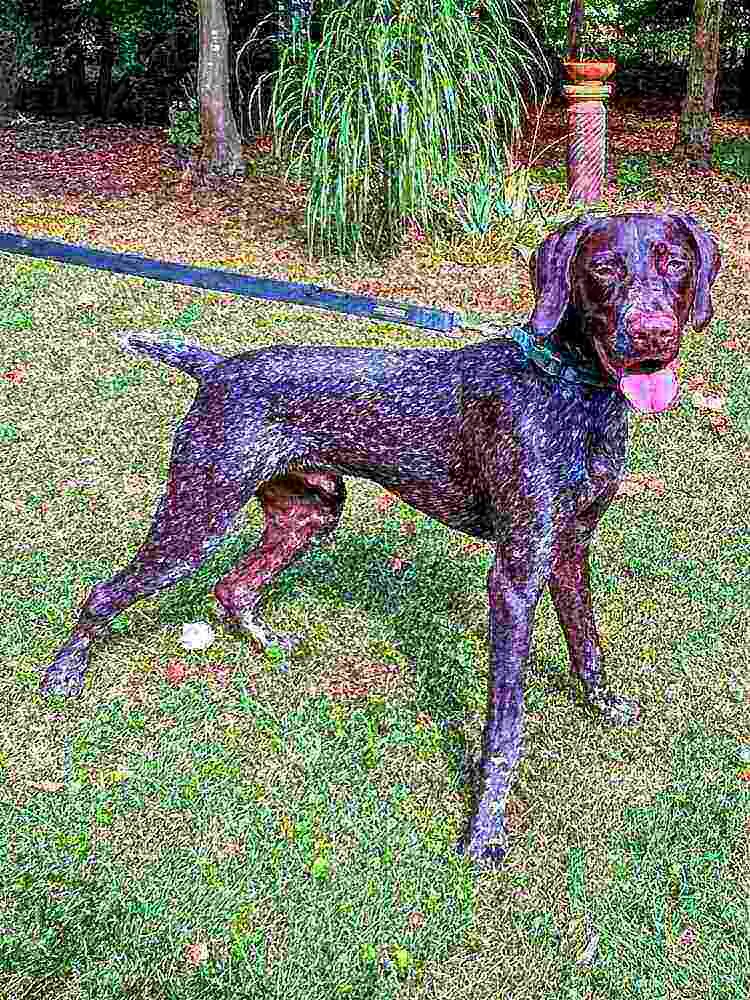
Bishop Cross Post is the name of another German Shorthaired Pointer (Male) on petfinder.com that is looking for a new forever home.

You can find more German Shorthaired Pointers that are available for adoption on petfinder.
German Shorthaired Pointer Growth
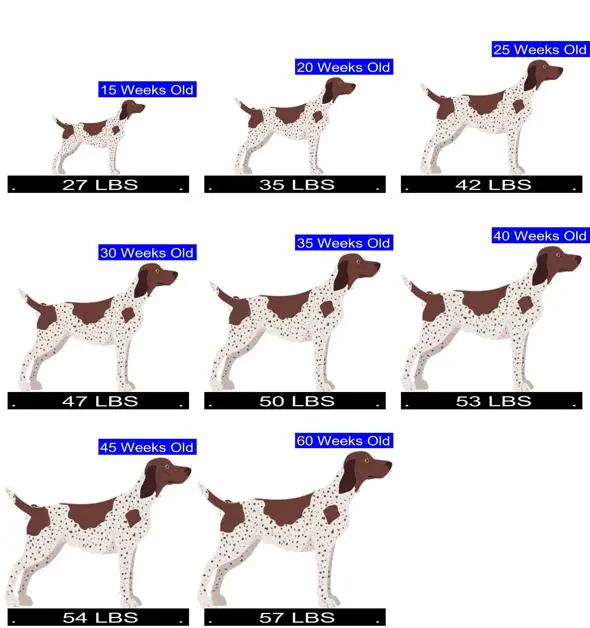
New German Shorthaired Pointer owners need to know about the growth of their German Shorthaired Pointers. This will help them plan their living spaces accordingly.
Also, knowing the typical growth pattern of the German Shorthaired Pointer will help new owners catch the abnormal growth of their German Shorthaired Pointer early.
See our calculator for predicting how big your German Shorthaired Pointer puppy will get. You will also learn about the typical weight of the German Shorthaired Pointer at different ages and how to catch abnormal growth in your German Shorthaired Pointer
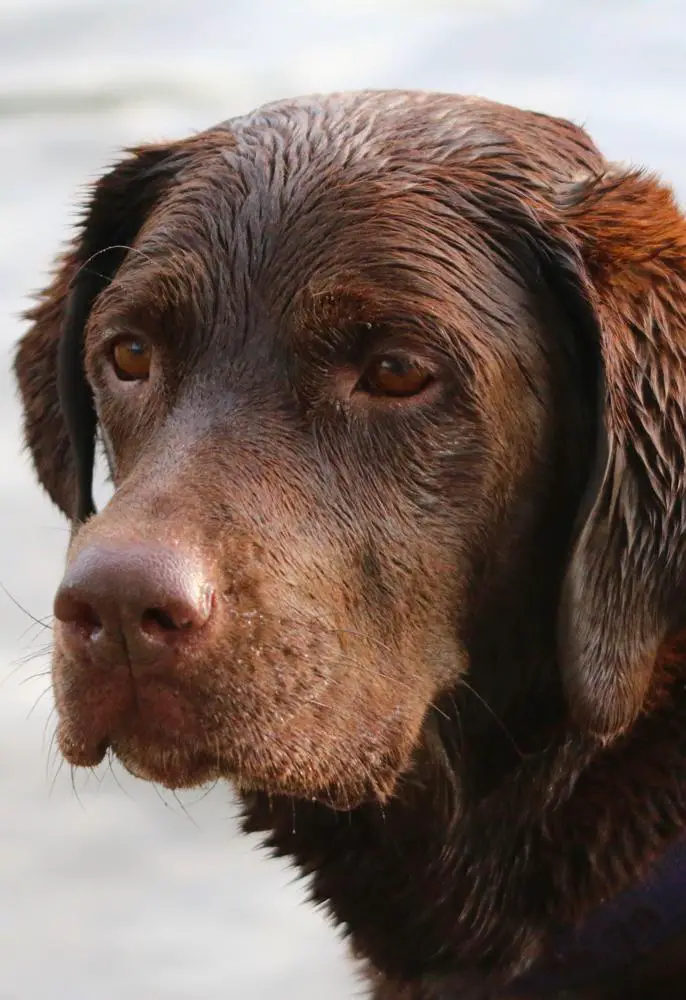
What Colors do German Shorthaired Pointers Have?
German Shorthaired Pointers come in the following beautiful primary colors:
- Brown / Chocolate
- Black
- White / Cream
- Bicolor
- Gray / Blue / Silver
- Tricolor (Brown, Black, & White)
- Red / Chestnut / Orange
German Shorthaired Pointers come in the following lovely secondary colors in addition to their primary colors:
- White / Cream
- Gray / Blue / Silver
- Brown / Chocolate
- Black
- Red / Chestnut / Orange
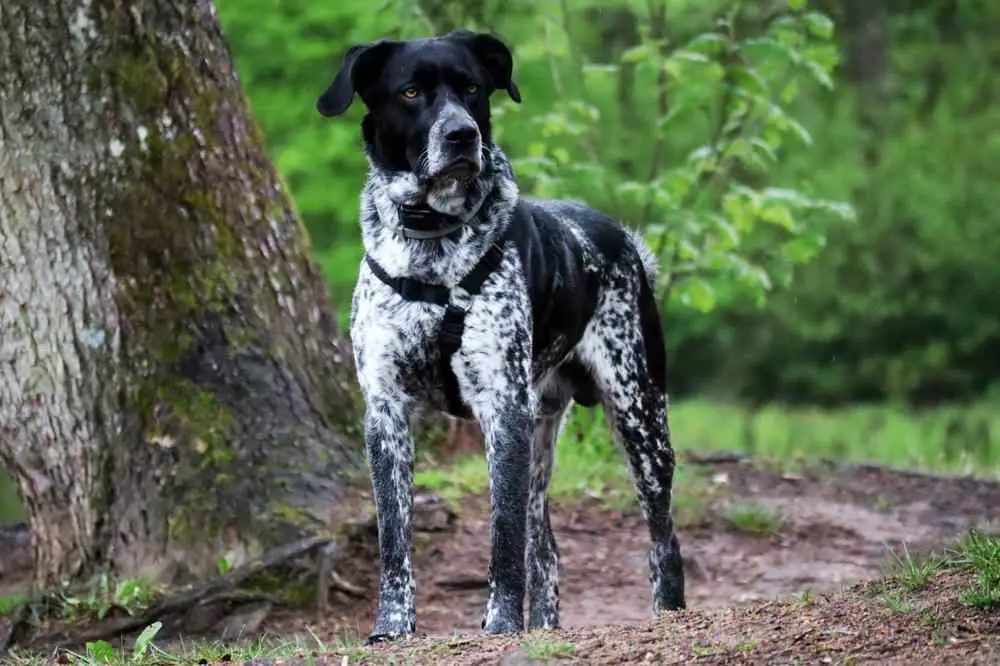
The Temperament of the German Shorthaired Pointer
The temperament of the German Shorthaired Pointer based can be summarized as in the table below.
The table shows the scores of the German Shorthaired Pointer for 13 important dog behavioral factors.
We obtained these scores by analyzing raw data from the C-BARQ dog personality survey tool. The higher the score of a dog for a factor, the worse the temperament of the dog regarding that factor.
The C-BARQ tool was developed by researchers from the University of Pennsylvania, and it is a scientific tool that is used worldwide for reliably measuring the temperament of dog breeds.
See our complete analysis of the temperament of the German Shorthaired Pointer here.
| Factor | Score |
|---|---|
| Energy Level | 86.4 percent |
| Prey Drive | 76.3 percent |
| Owner Directed Aggression | 7.7 percent |
| Excitability | 53.5 percent |
| Separation Related Behavior | 51.7 percent |
| Attachment Attention Seeking | 38.6 percent |
| Nonsocial Fear | 37.2 percent |
| Dog Directed Aggression | 37.1 percent |
| Stubbornness | 28.8 percent |
| Touch Sensitivity | 28.2 percent |
| Dog Directed Fear | 26.6 percent |
| Stranger Directed Aggression | 26.0 percent |
| Dog Rivalry | 25.4 percent |
| Stranger Directed Fear | 16.6 percent |

How Long German Shorthaired Pointers Live
The lifespan of the German Shorthaired Pointer is typically from 12 to 15 years.
Moreover, a few years back, veterinarian researchers performed a scientific study to determine the lifespan of the German Shorthaired Pointer. In this study, the scientists collected data on how long 159 pet German Shorthaired Pointers lived.
From the study, it was found that German Shorthaired Pointers have an average lifespan of 12 years. Furthermore, the study found that it is not uncommon for German Shorthaired Pointers to live as long as 17 years.
Note that you need to put in some effort if you want your German Shorthaired Pointer to live long.
German Shorthaired Pointers live long if they eat well, drink well, exercise well, and visit the veterinarian regularly.
There are also dog supplements that you can give your German Shorthaired Pointer to improve your German Shorthaired Pointer`s quality of their life.
Click here to learn more about how to make your German Shorthaired Pointer live long.
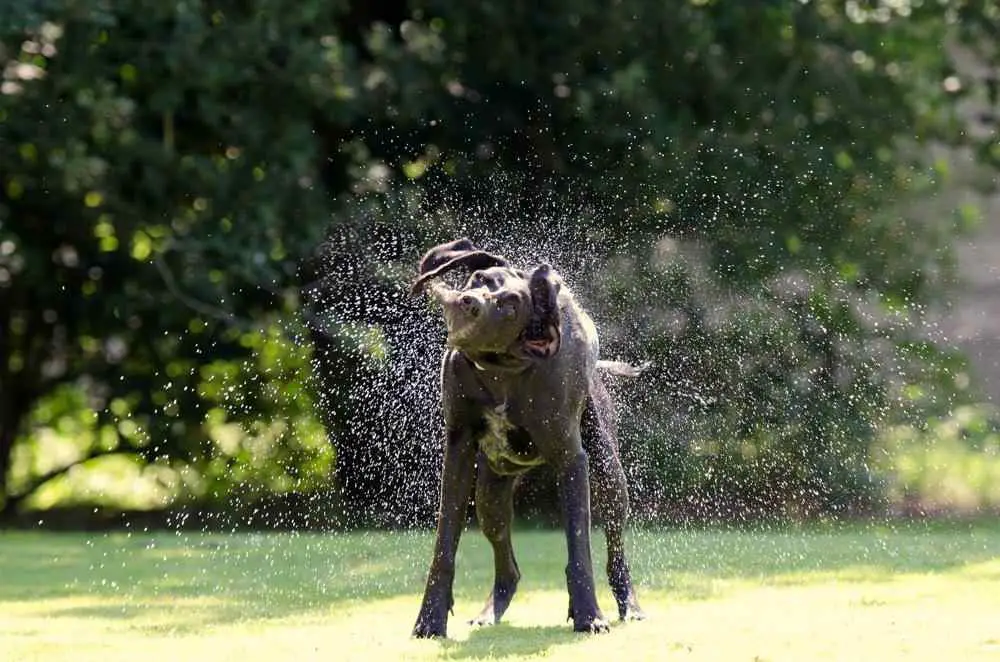
German Shorthaired Pointer Litter Size
Researchers from the Norwegian School of Veterinary Science did a study where they counted the numbers of puppies in 64 different German Shorthaired Pointer birth litters.
From this study, the researchers found that the average number of puppies that German Shorthaired Pointers can have is 8 puppies. Also, the German Shorthaired Pointer can have as few as 1 puppies per litter and as many as 15 puppies per litter.
The number of puppies that the German Shorthaired Pointer will have depends on factors such as the age of the German Shorthaired Pointer, the method of pregnancy, etc.
Click here to see our calculator for predicting how many puppies your German Shorthaired Pointer will have and how the litter size of the German Shorthaired Pointer compares to the litter size of other dog breeds.
How Fast German Shorthaired Pointers Can Run

How fast a dog breed can run is a good measure of how athletic the dog breed is.
The American Kennel Club (AKC) regularly conducts dog running competitions. The AKC records the running speed of competing dogs in these competitions. These competitions are open to all dog breeds.
Based on our analysis of the speeds of 271 different German Shorthaired Pointers, the average speed of the German Shorthaired Pointer is 25.3 mph (40.8 kmph).
The fastest speed on AKC record that the German Shorthaired Pointer ran in a race is 33.7 mph (54.2 kmph) and the minimum speed on record in a race for a German Shorthaired Pointer is 12.03 mph (19.4 kmph).
Click here to see how the speed of the German Shorthaired Pointer compares to the speed of other dogs and other mammals such as cats, horses, humans, etc.
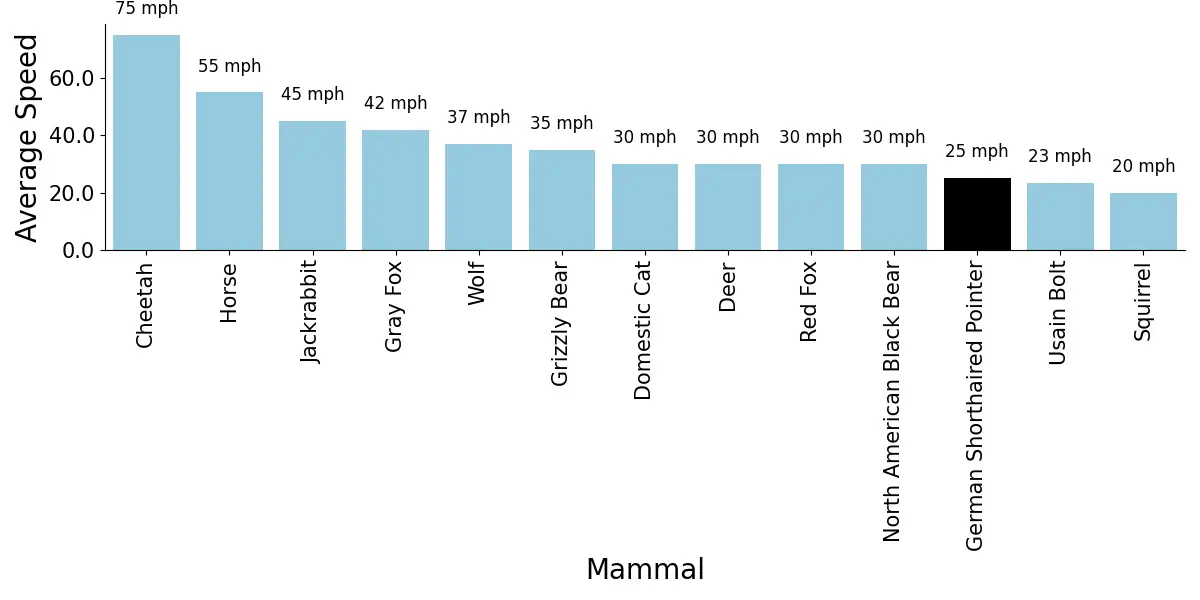
Good Names for German Shorthaired Pointers
Here are some really good names that are typical for the German Shorthaired Pointer ranked by popularity:
- Hunter
- Tucker
- Rodney
- Duke
- Yogi
- Gus
- Blue
- Duke
- Rocky
- Brogan
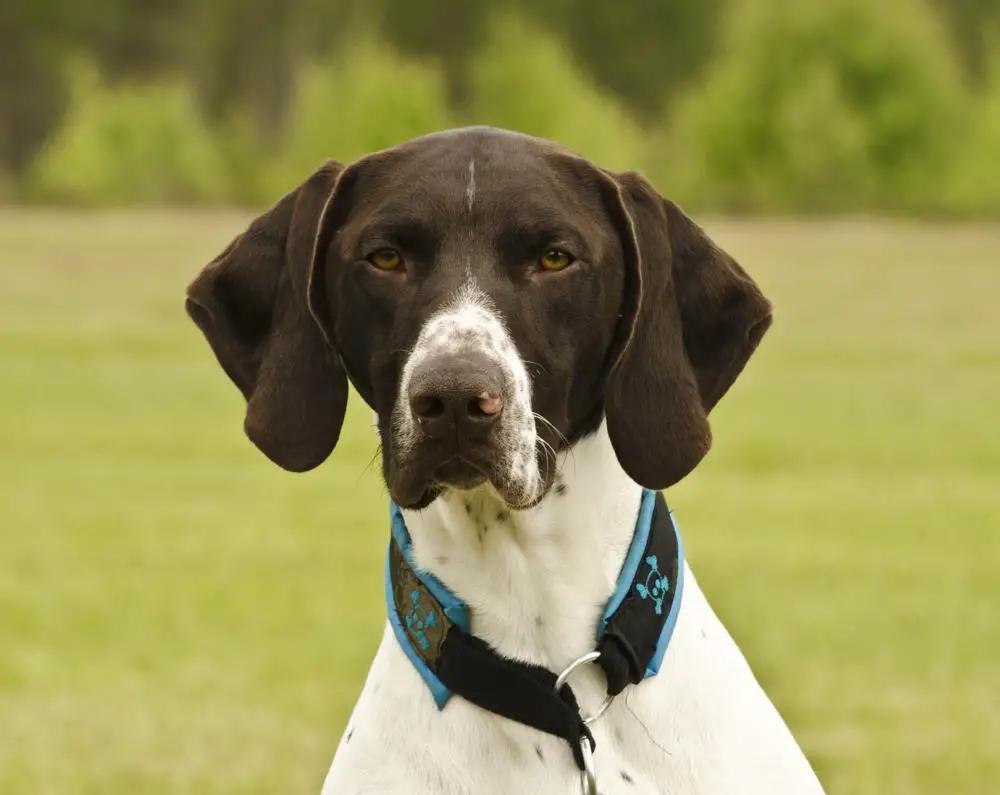
How Intelligent are German Shorthaired Pointers?
| German Shorthaired Pointer | |
|---|---|
| Intelligence Rank | 17 out of 130 dog breeds |
| Trainability | Tend To Learn New Commands After 5 To 15 Repetitions |
According to Prof. Stanley Coren, a Canadian psychology professor/dog trainer, the total intelligence that a dog demonstrates is the addition of three types of intelligence. These intelligence types are:
- Instinctive Intelligence: This is the natural intelligence that comes from instinct. For example, dog breeds that have been historically bred to be guard dogs will have a high `guarding` intelligence compared to dogs that were not bred for guarding.
- Adaptive Intelligence (learning and problem-solving ability): This indicates what a dog can learn to do for himself or herself. Adaptive intelligence is specific to each dog, and not breed specific. You can improve your dog`s adaptive intelligence by investing time to train your dog.
- Working/Obedience Intelligence: This type of intelligence is breed-specific. Certain dog breeds tend to have higher working/obedience intelligence than some other breeds. This intelligence is the closest to what we might call school-learning ability and it is based upon what the dog can learn to do when instructed by humans. This type of intelligence can be measured for each dog breed and compared to that of other dog breeds.
Professor Stanley Coren measured and ranked the working intelligence of about 130 different dog breeds.
Prof. Coren found that the German Shorthaired Pointer has an obedience intelligence rank of 17 out of 130 dog breeds. Thus, Prof. Coren put German Shorthaired Pointers in the `Excellent Working Dogs` category.
This means that German Shorthaired Pointers tend to learn new commands after 5 to 15 repetitions.
However, we should mention that a dog should not be judged based on its intelligence alone. There are other important factors you need to consider when deciding on which dog breed to get. These other factors include sociability, adorability, and compatibility of the dog breed with your lifestyle.
See the intelligence ranking of some other dog breeds below:
| Breed | Intelligence Rank |
|---|---|
| Border Collie | 1 |
| Golden Retriever | 4 |
| Pembroke Welsh Corgi | 11 |
| English Cocker Spaniel | 18 |
| Brittany | 19 |
| Vizsla | 25 |
| Cardigan Welsh Corgi | 26 |
| Chesapeake Bay Retriever | 27 |
| Border Terrier | 30 |
| Samoyed | 33 |
| Norwegian Elkhound | 36 |
| Norwich Terrier | 38 |
| American Foxhound | 46 |
| Scottish Deerhound | 47 |
| Chinese Shar-Pei | 51 |
| Saint Bernard | 65 |
| Basset Hound | 71 |
| Pekingese | 73 |
| Borzoi | 75 |
| Basenji | 78 |

How Popular are German Shorthaired Pointers with New Dog Owners?
Every year, the American Kennel Club (AKC) publishes information on how popular a dog breed is in that particular year. The AKC gets the popularity information of a breed from how many dogs of that breed the owners register with the AKC every year. The AKC collects this data for about 200 dog breeds.
The graph below shows the popularity trend of the German Shorthaired Pointer.
The popularity of the German Shorthaired Pointer averaged over the years is Number 10 out of about 200 dog breeds.
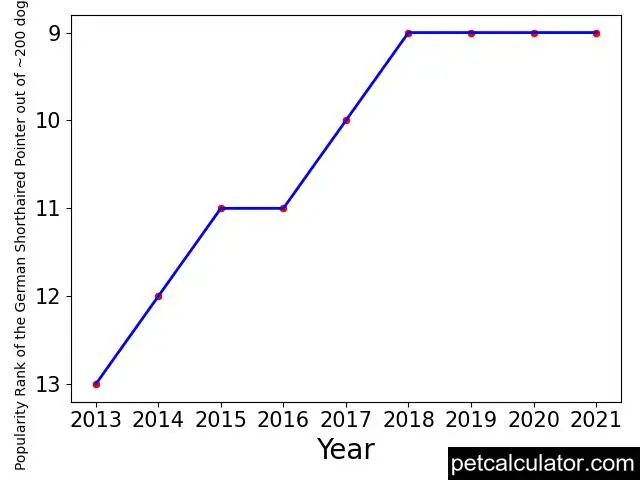
Do not get a dog breed just because it is a popular dog breed. And do not reject a dog breed just because it is an unpopular breed.
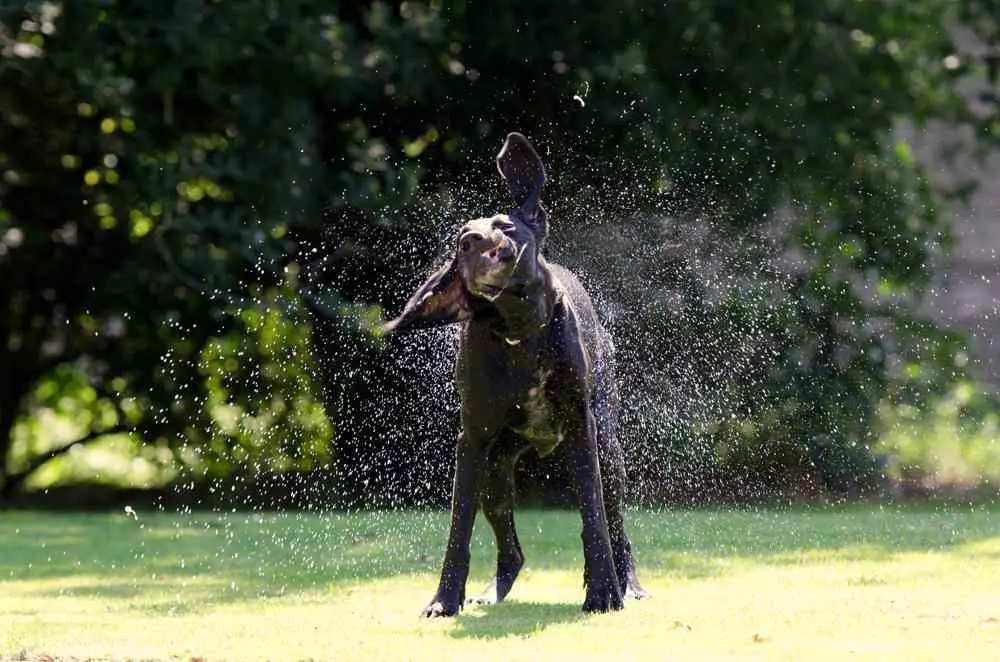
Health Problems in German Shorthaired Pointers and How to Prevent Them
Every dog breed has its own set of health problems that it tends to develop. There is nothing like a perfect dog breed.
The German Shorthaired Pointer is prone to certain genetic health conditions. The Orthopedic Foundation for Animals (OFA) is an organization that keeps track of genetic health problems in dog breeds.
From the extensive records that the OFA keeps, the OFA knows what health problems each dog breed is naturally prone to develop.
Hence, the OFA recommends which health screening breeders should perform on a dog breed to make sure that the breeders won`t breed `defective` dog parents that can pass down defective genes to their puppy offspring.
If you want a German Shorthaired Pointer puppy that will grow up to be healthy, make sure that your German Shorthaired Pointer breeder screens your puppy or your puppy`s parents for the health problems that the OFA recommends for your puppy`s breed. This will increase the chances that your puppy is free from genetic defects.
The following are the health tests that Orthopedic Foundation for Animals (OFA) recommends that breeders should screen German Shorthaired Pointers for:
- Autoimmune thyroiditis
- Cardiac Evaluation – min age 24 months
- Cone Degeneration
- Elbow Dysplasia
- Eye Examination – annual exams until age 6 recommended
- Hip Dysplasia
- von Willebrand`s Disease
You can find out more about OFA`s recommended tests for German Shorthaired Pointers here.
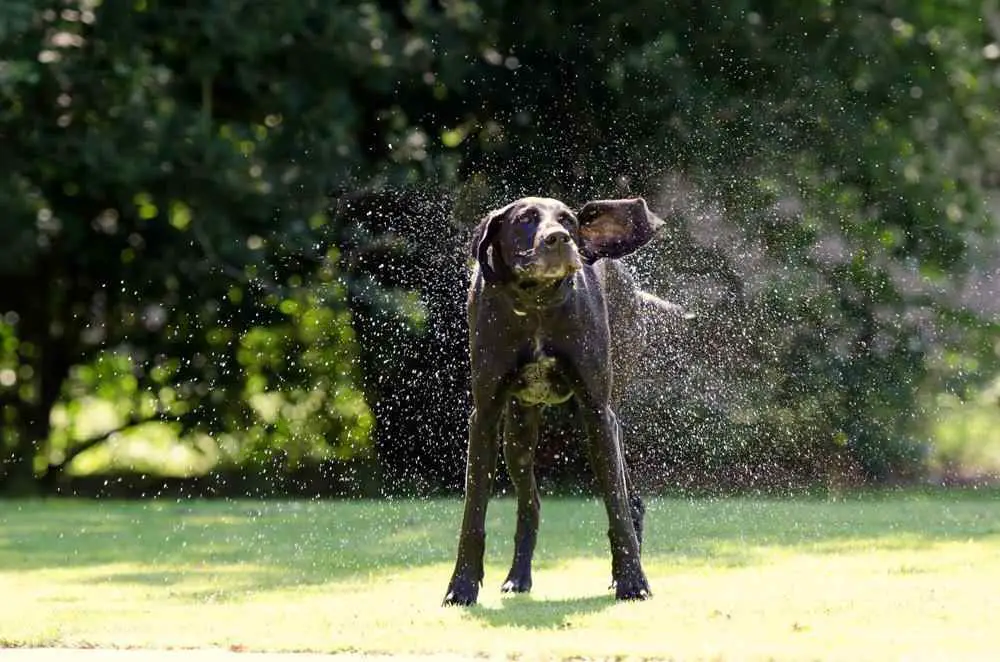
How to Take Care of German Shorthaired Pointer
To take good care of your German Shorthaired Pointer, you need to make sure that you groom your German Shorthaired Pointer regularly.
Secondly, you need to find a veterinarian in your area that will routinely check the health status of your German Shorthaired Pointer regularly, and give you appropriate recommendations on your German Shorthaired Pointer`s preventative care.
Thirdly, you need to commit some time to exercise your German Shorthaired Pointer daily. Regular exercise helps improve the health and quality of life of your German Shorthaired Pointer.
Also, you need to feed your German Shorthaired Pointer high-quality dog food, and the food should be of the right amount to prevent your German Shorthaired Pointer from getting overweight or underweight.
See our recommendations on what to feed the German Shorthaired Pointer and how much food to feed the German Shorthaired Pointer at different life stages.
Finally, you need to make sure that your German Shorthaired Pointer has access to clean water all the time. See our recommendations on how much water your German Shorthaired Pointer needs to drink at different ages.
Dog Breeds That Are Similar to German Shorthaired Pointers
If you have not made up your mind on which dog breed to get, you may also want to consider some other dogs similar to the German Shorthaired Pointer.
We crunched the numbers and found that the following dog breeds that have similar behavior and temperament as the German Shorthaired Pointer:
- Field Spaniel (83 percent match with German Shorthaired Pointer). Learn more about the Field Spaniel here.
- German Wirehaired Pointer (80 percent match with German Shorthaired Pointer). Learn more about the German Wirehaired Pointer here.
- Pointer (81 percent match with German Shorthaired Pointer). Learn more about the Pointer here.
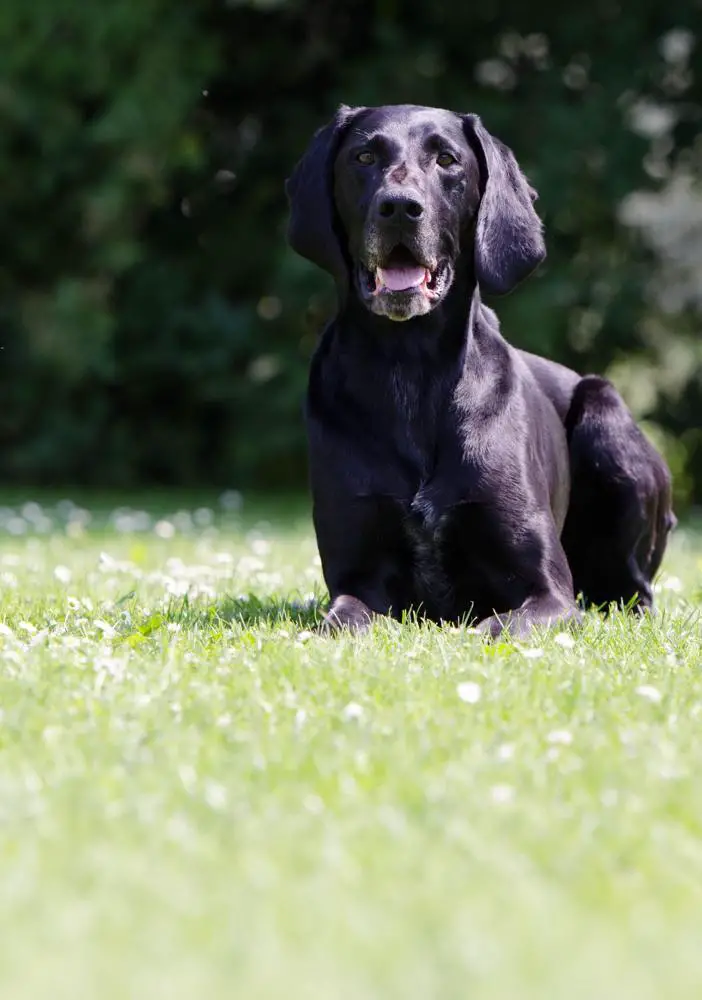
Other Things to Know About German Shorthaired Pointers
Here are some of the very important characteristics of the German Shorthaired Pointer that you need to know about the German Shorthaired Pointer breed:
